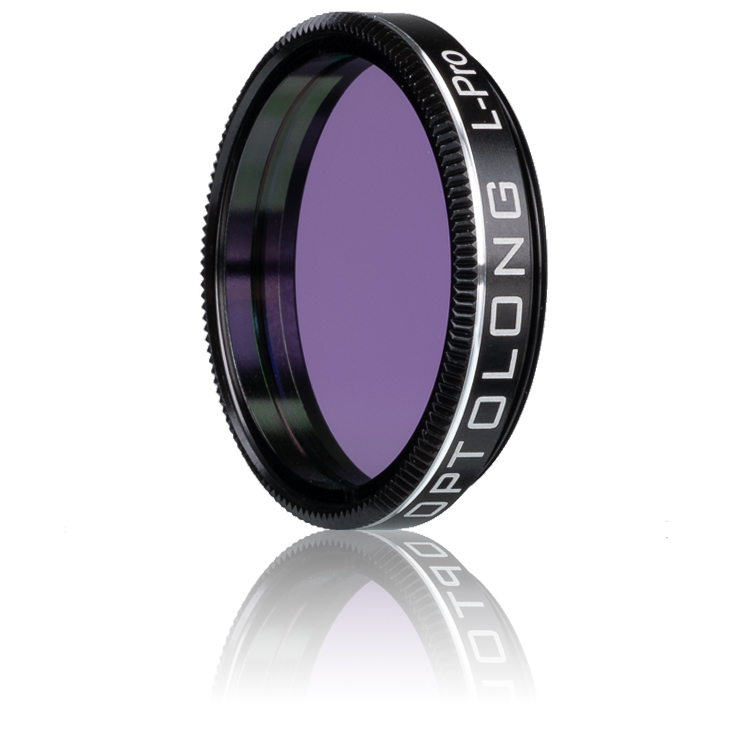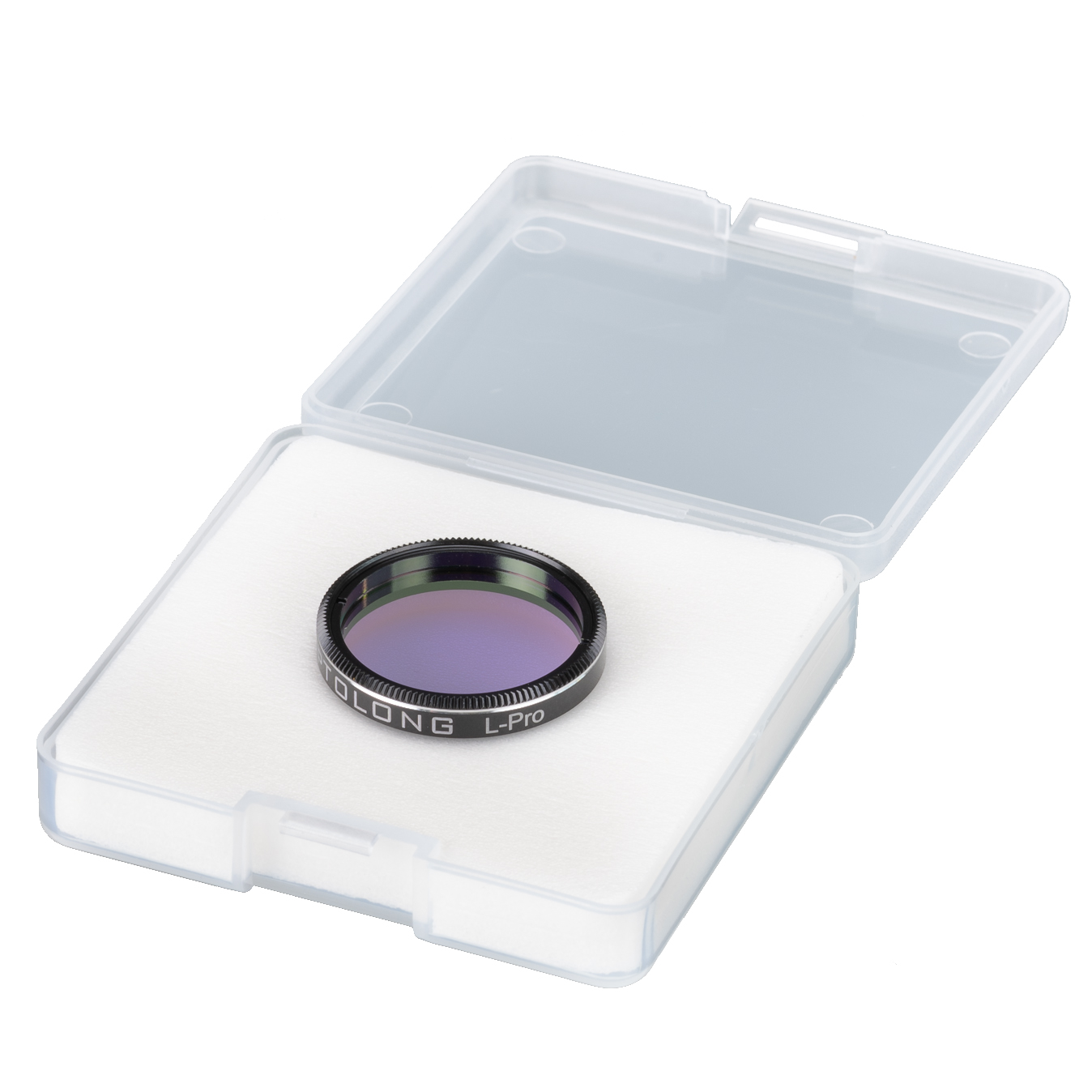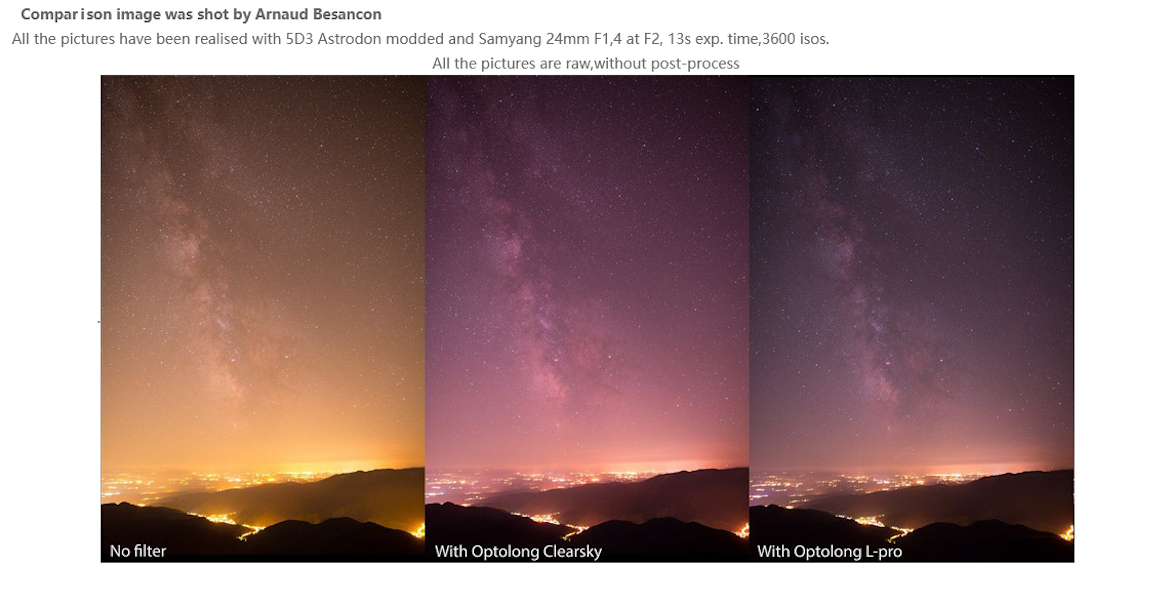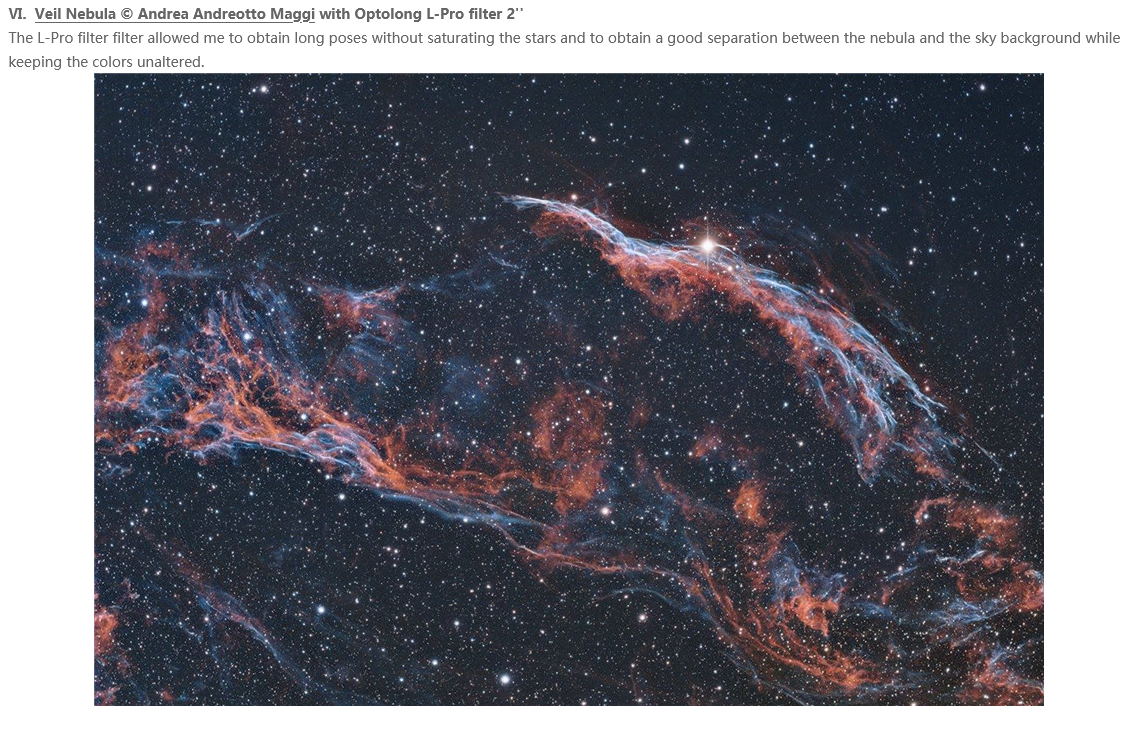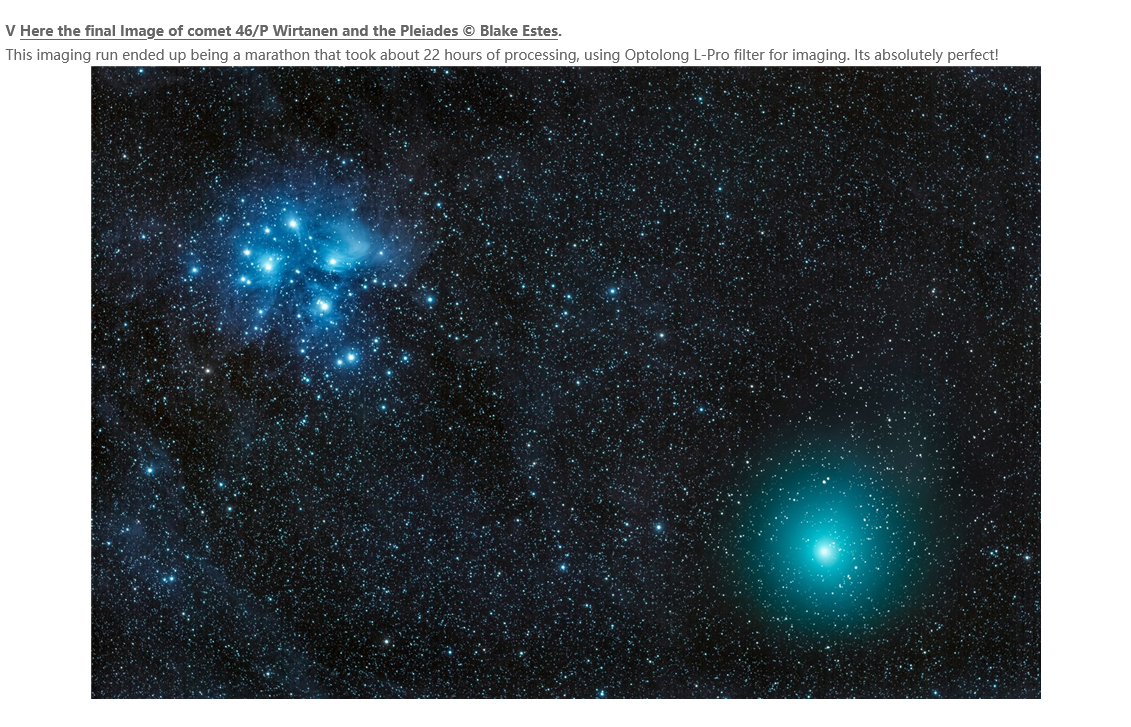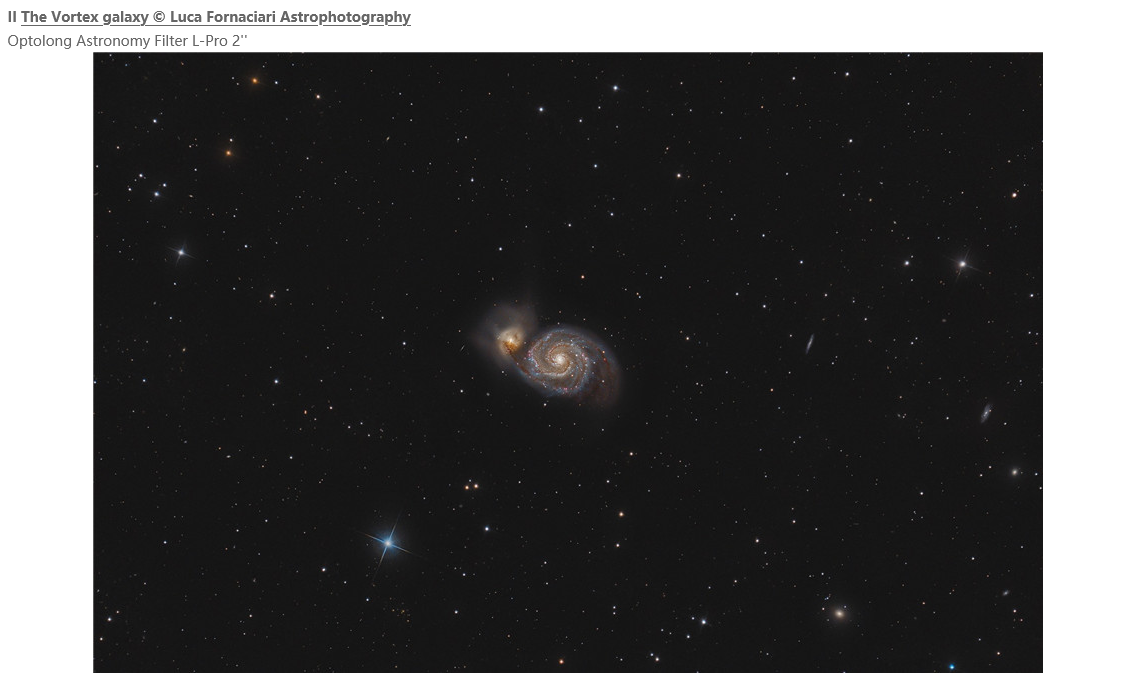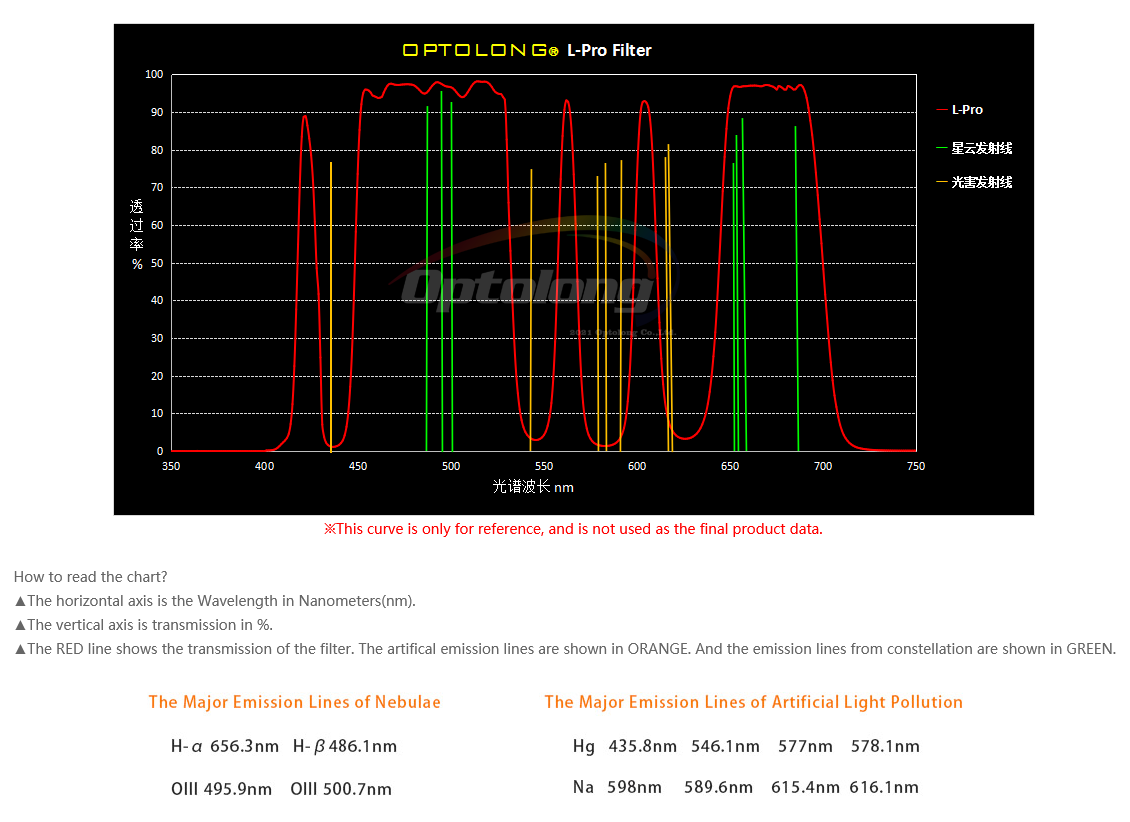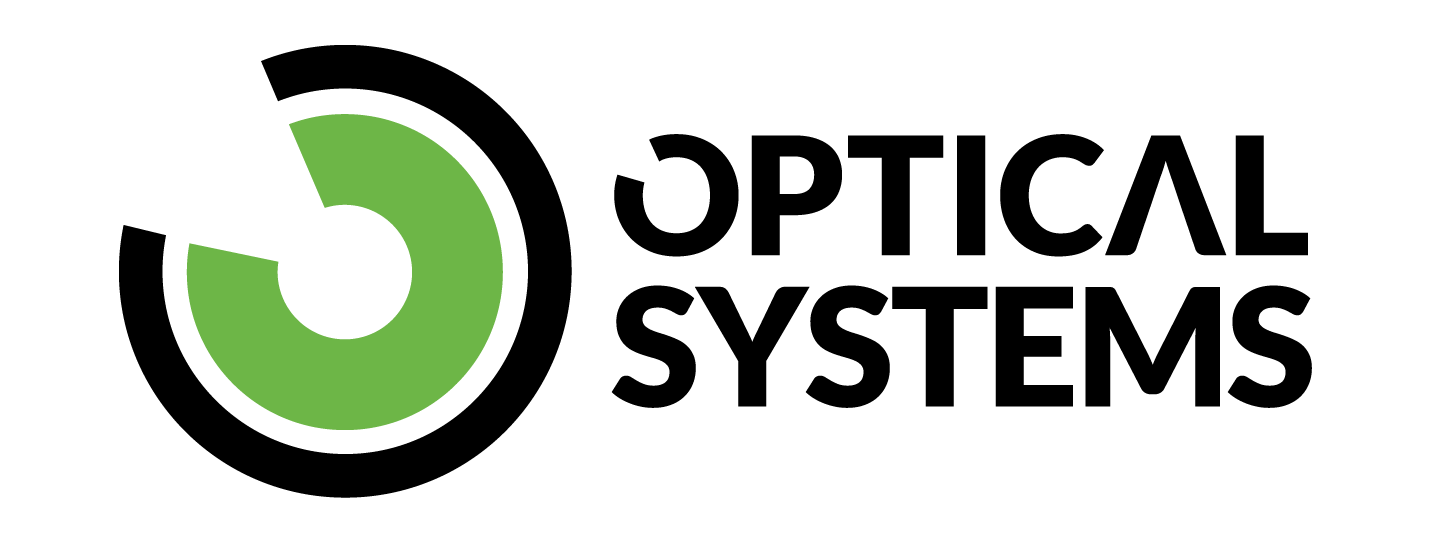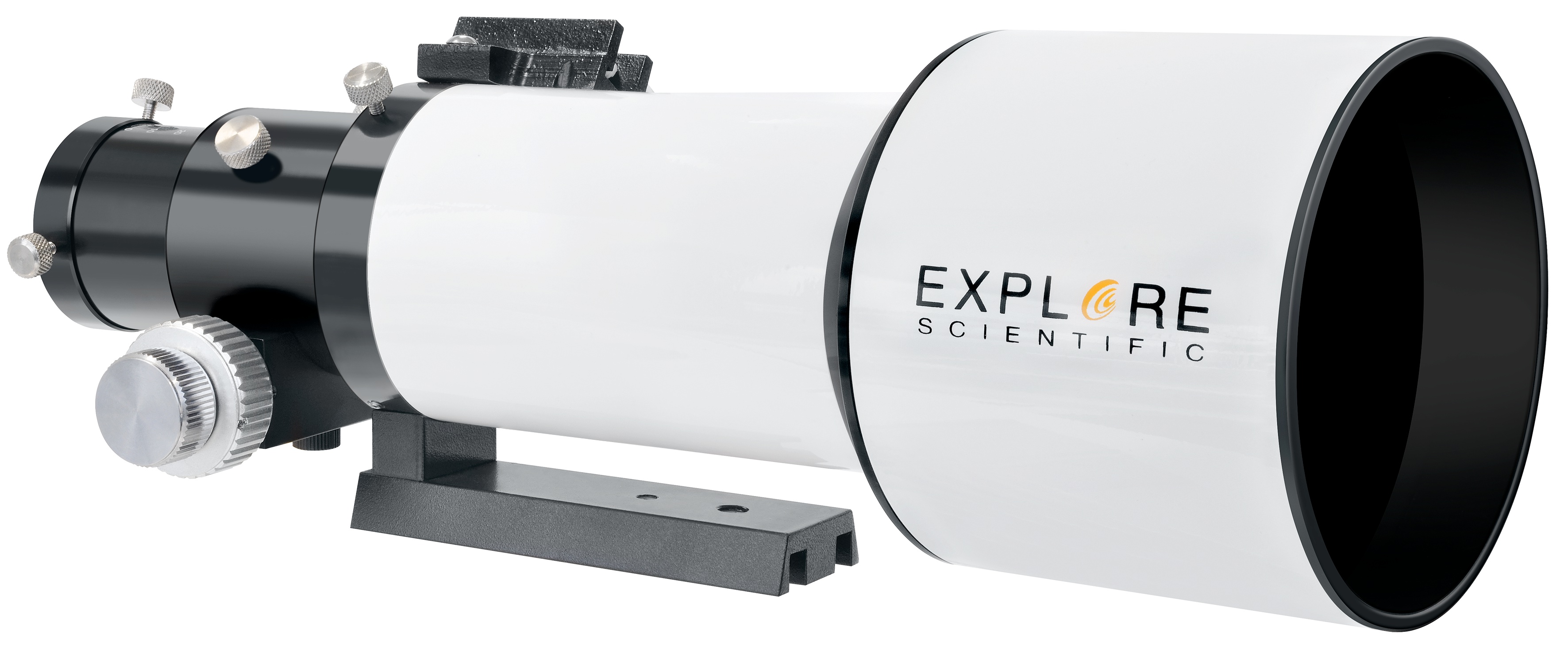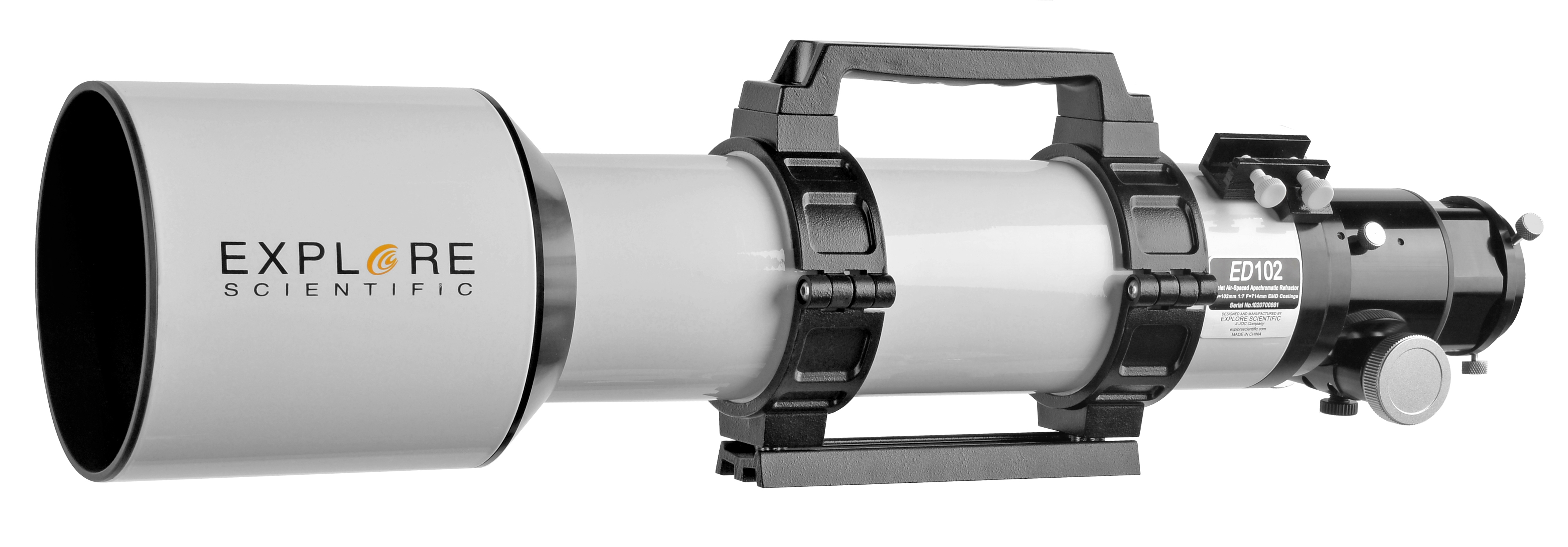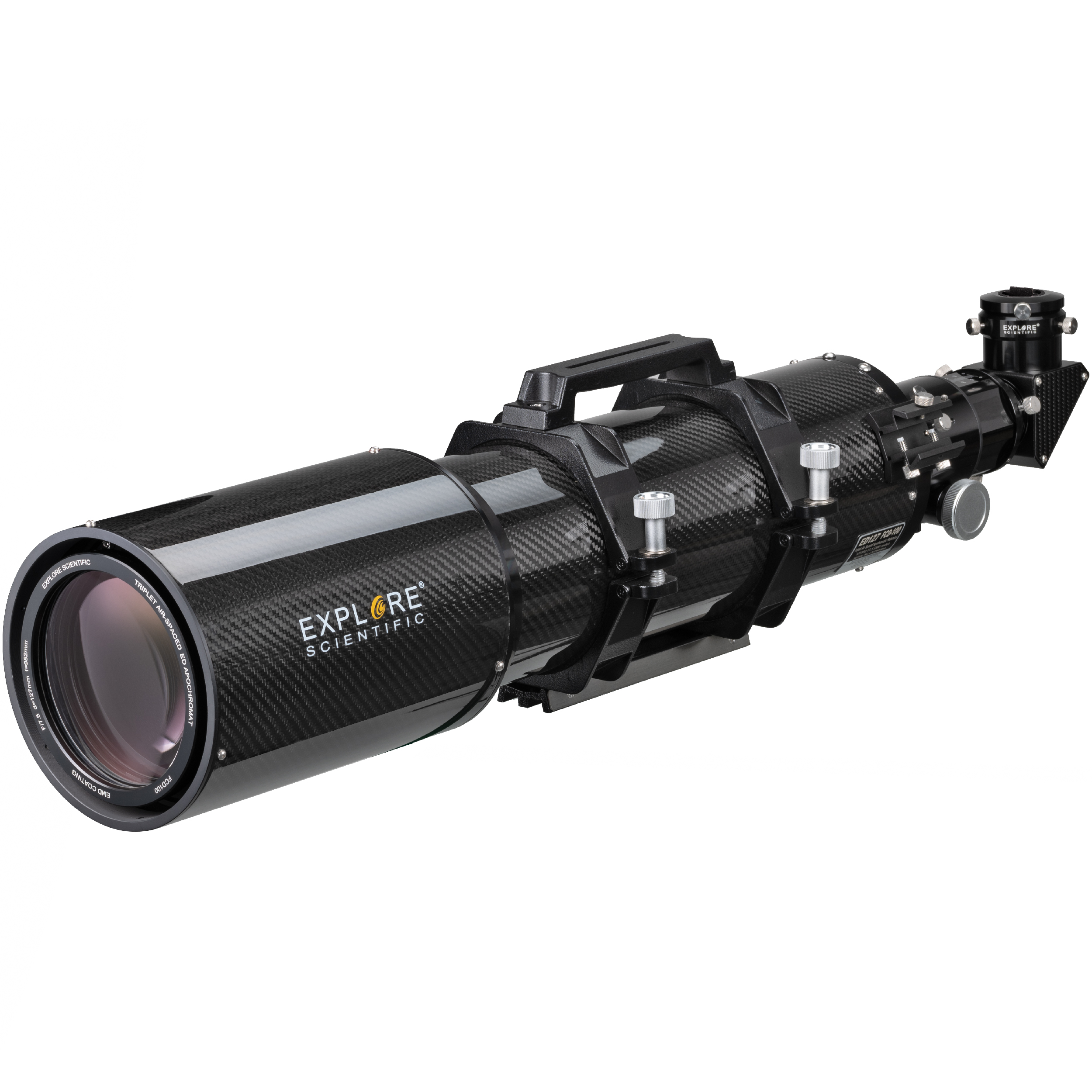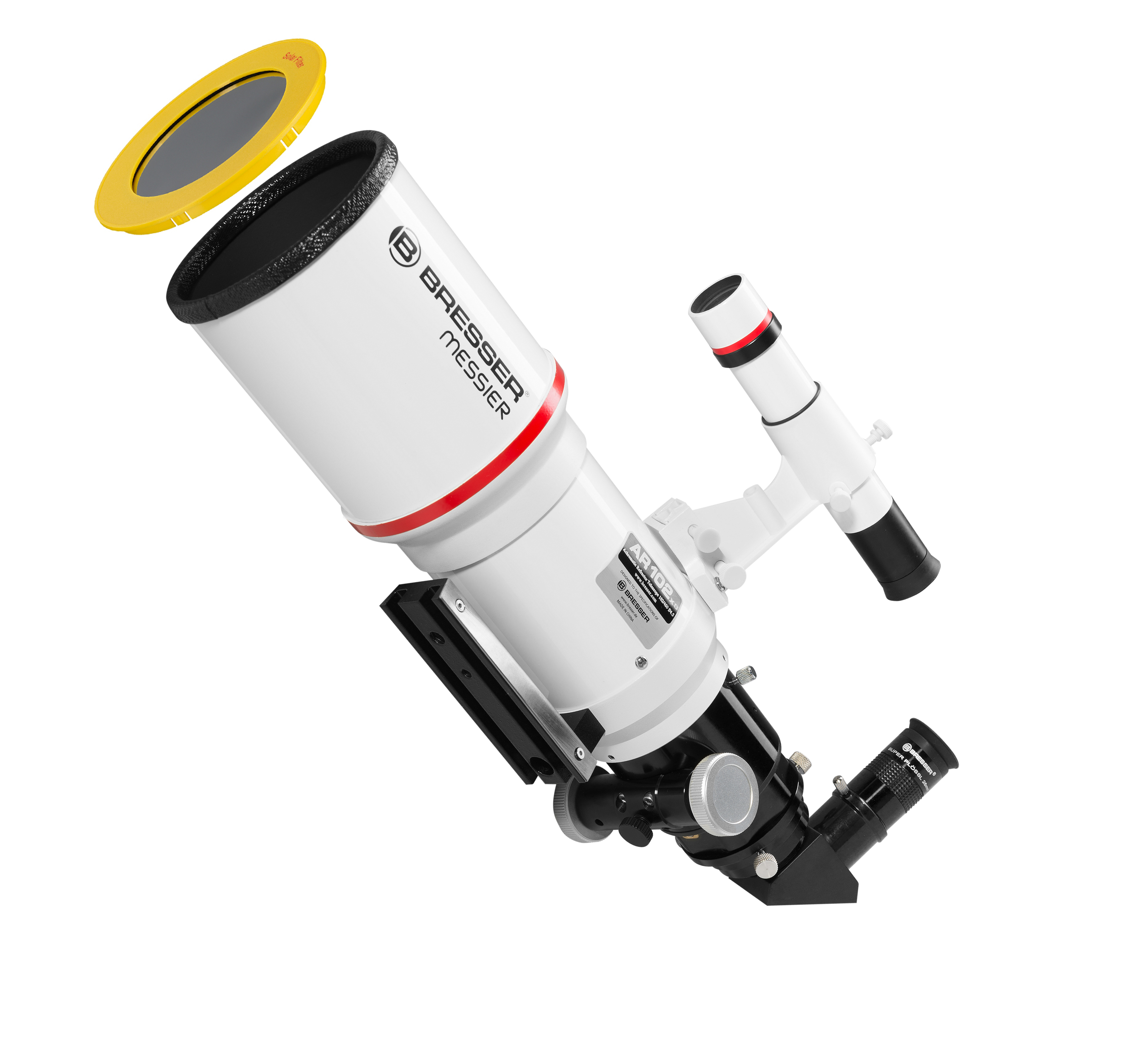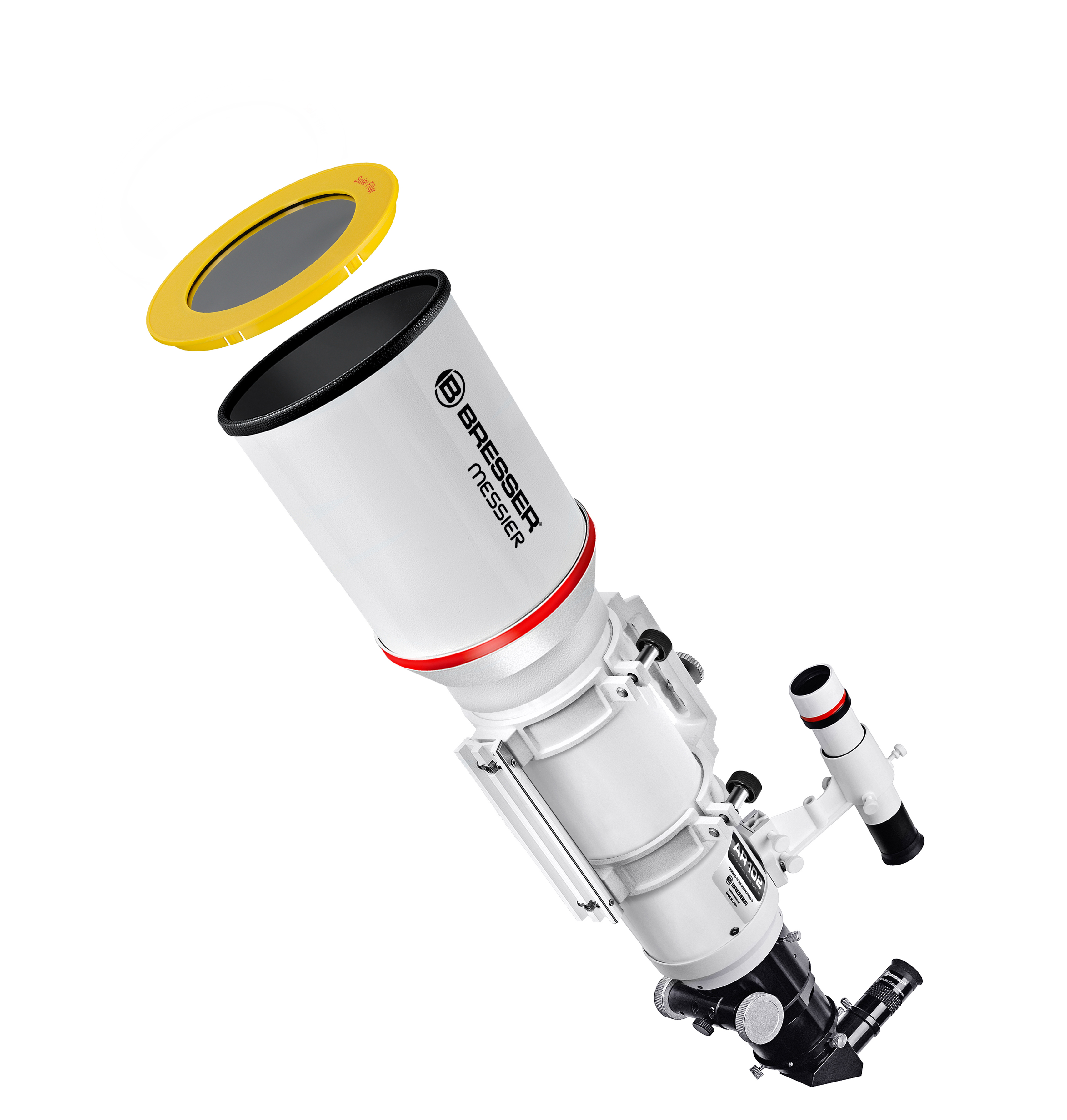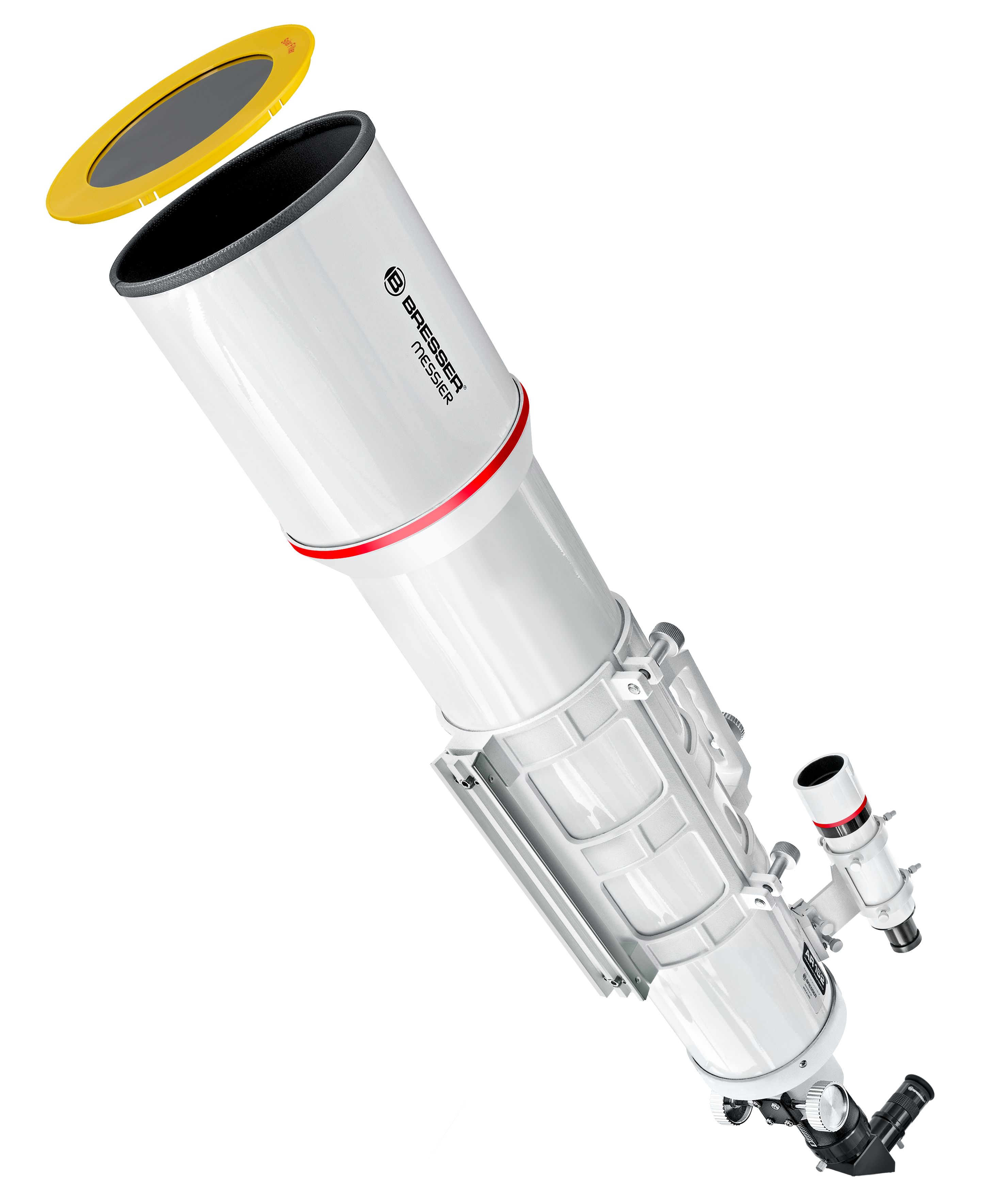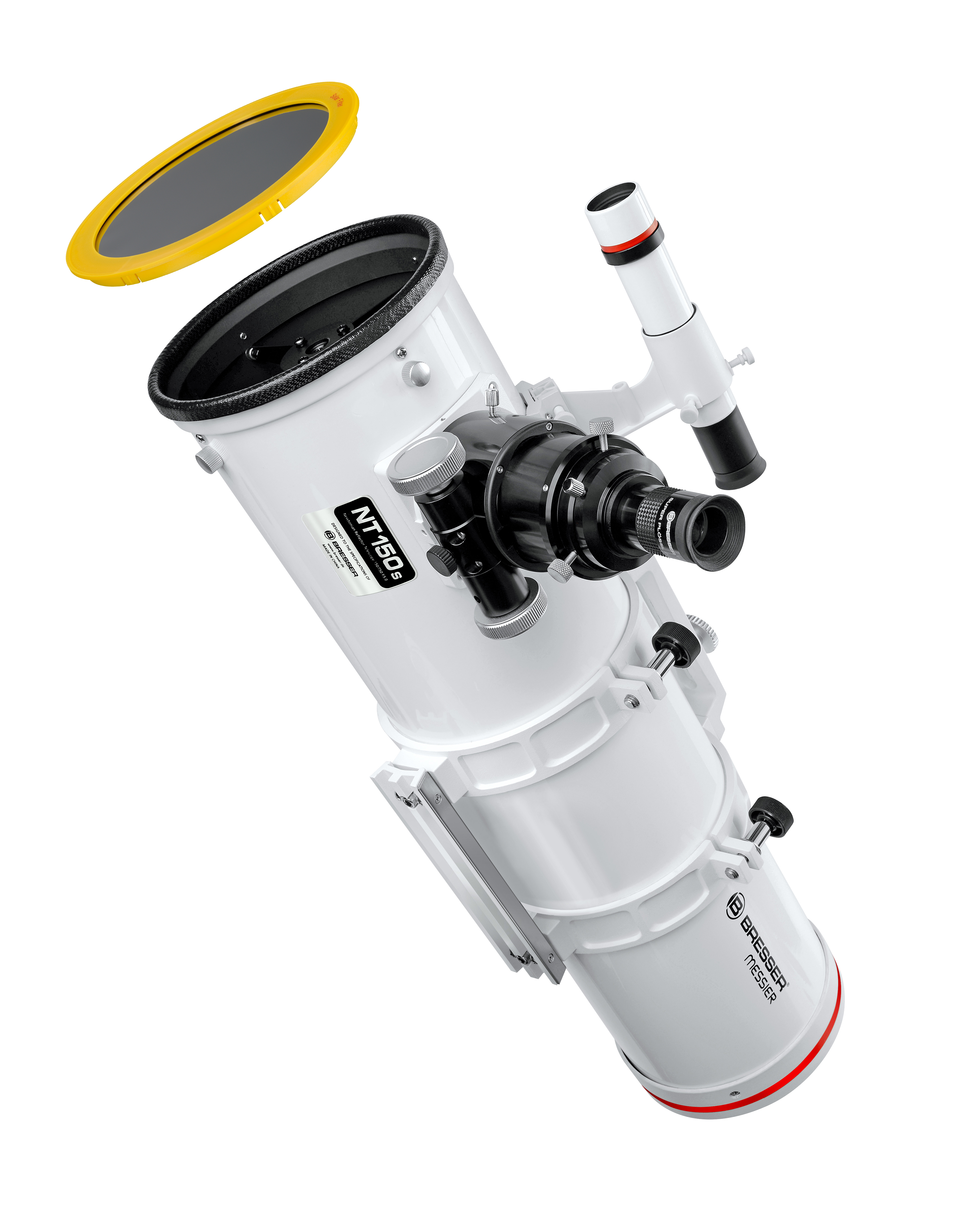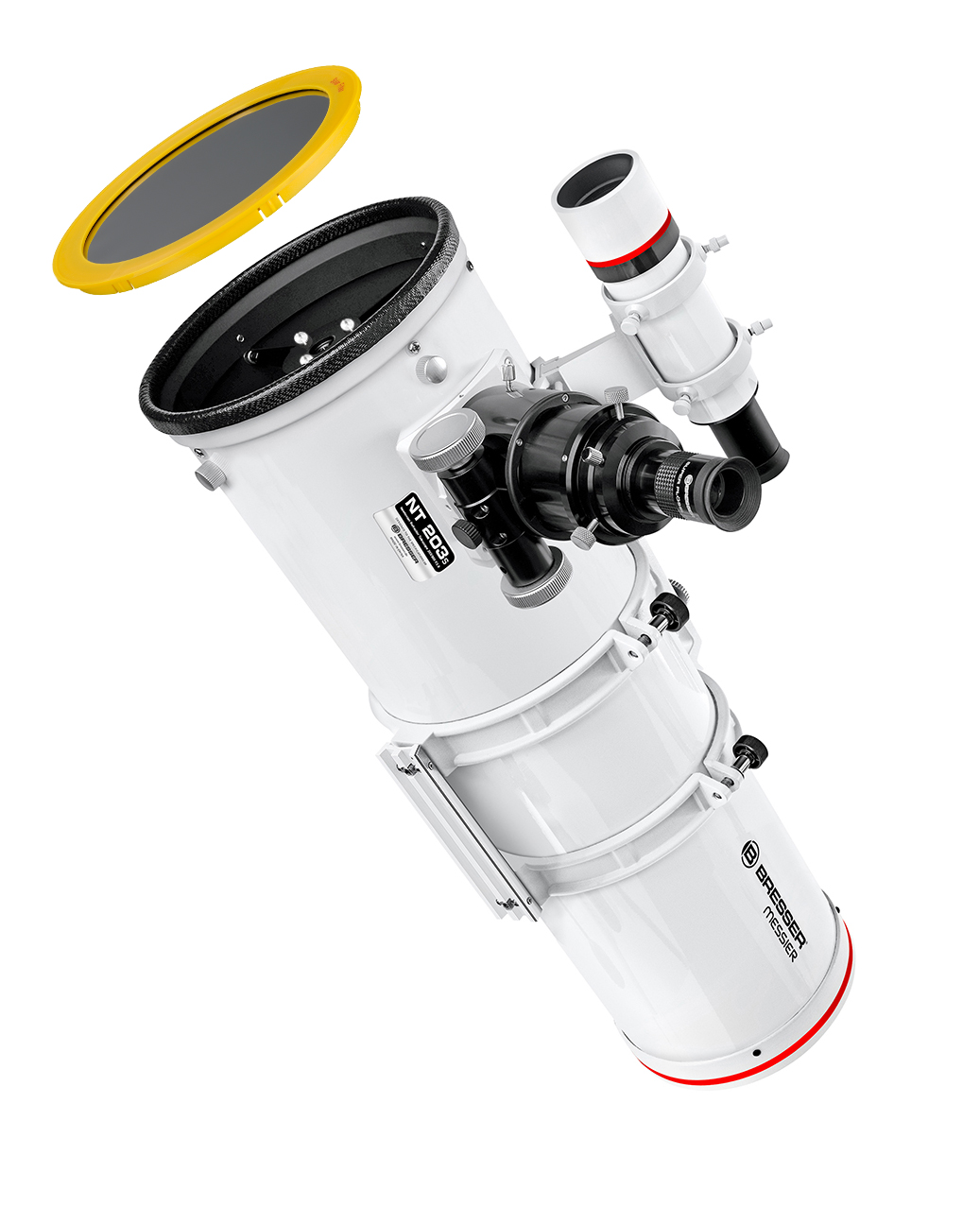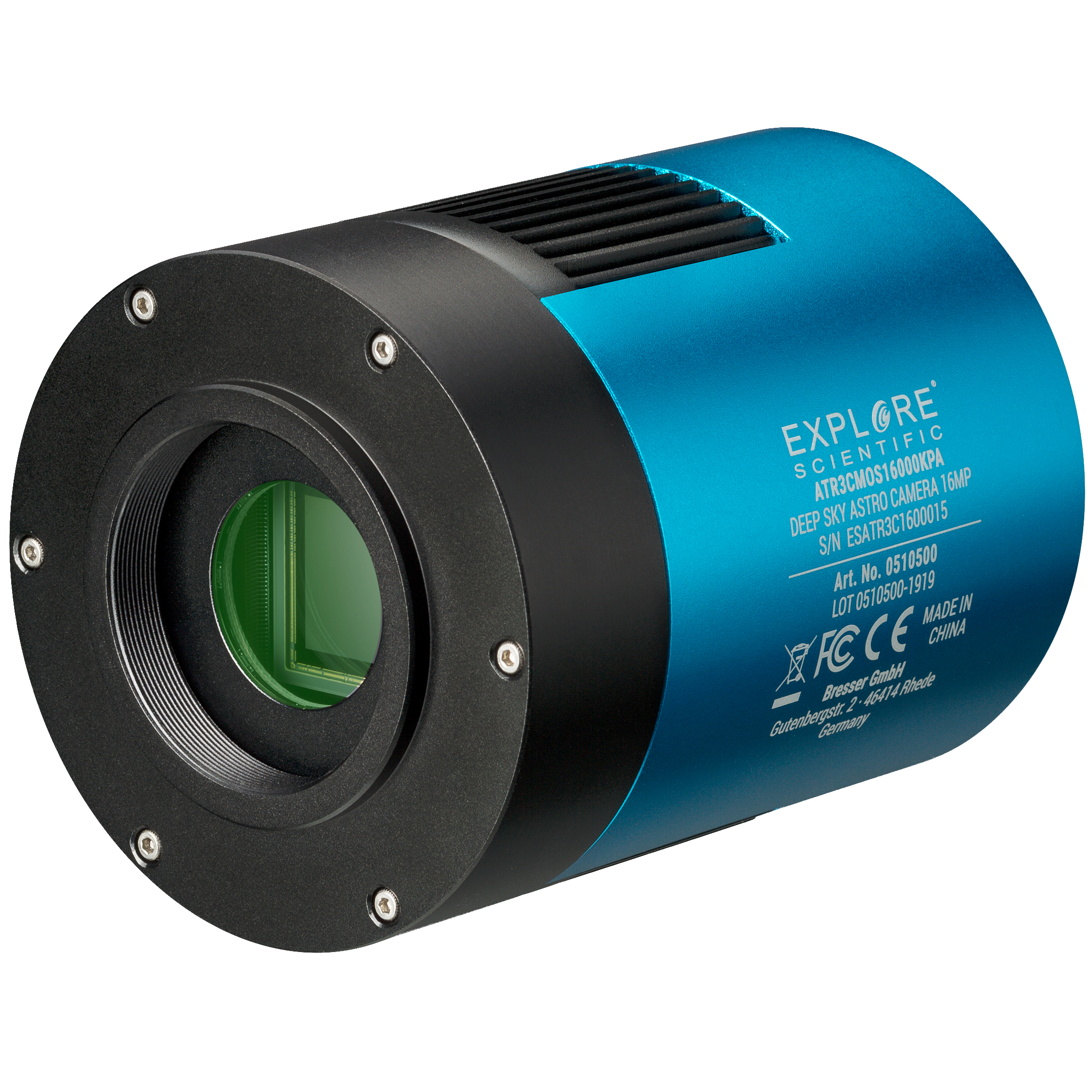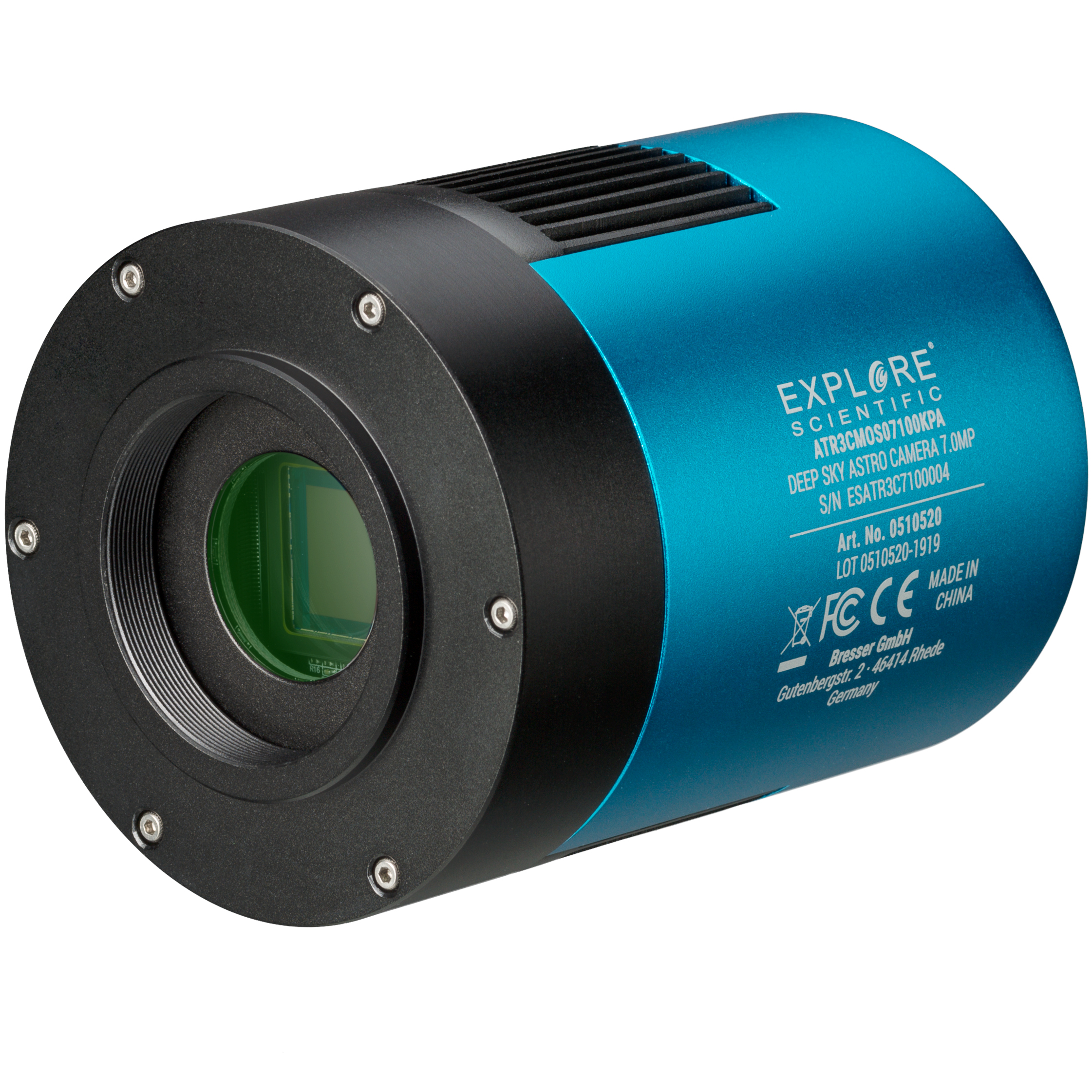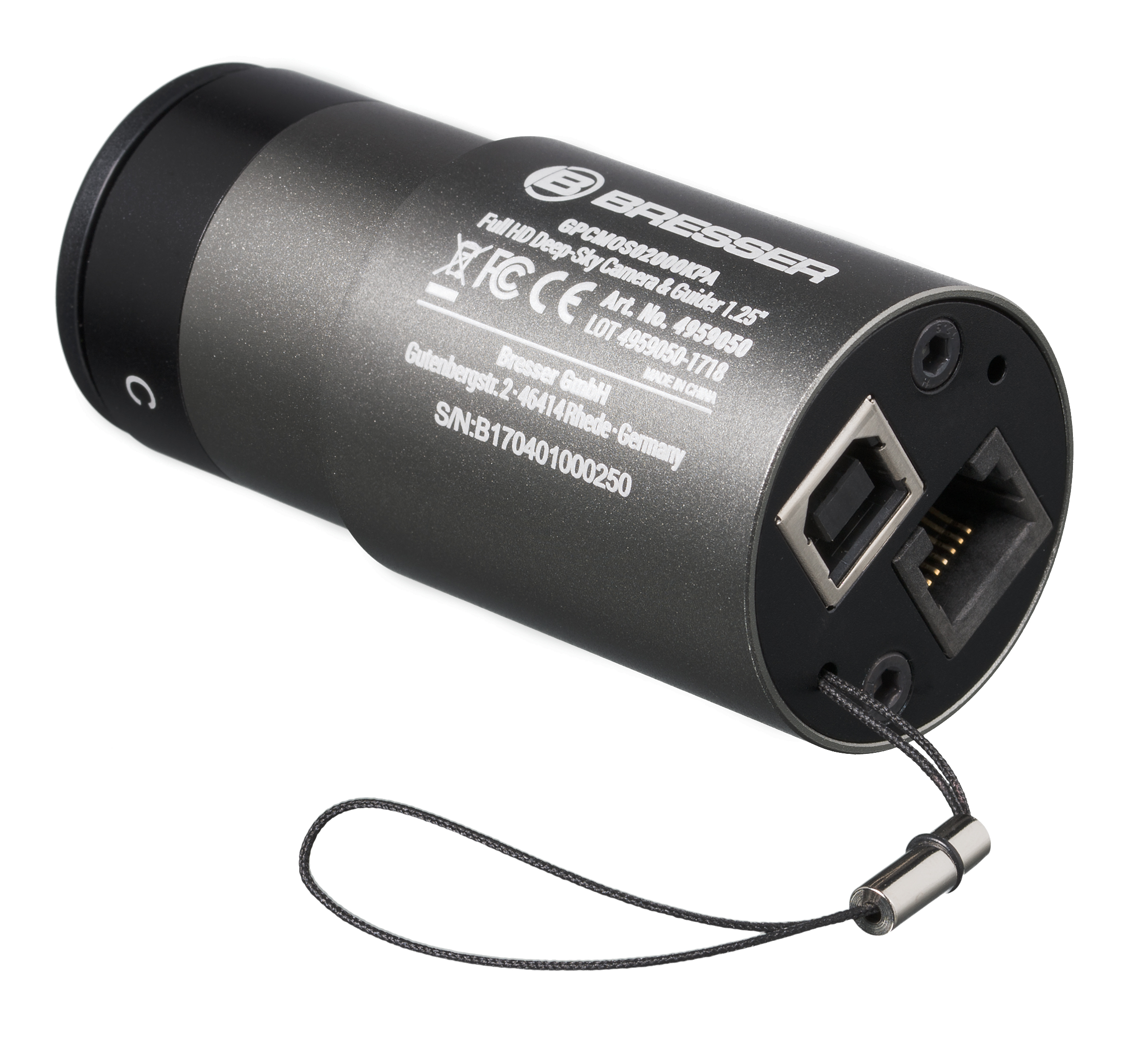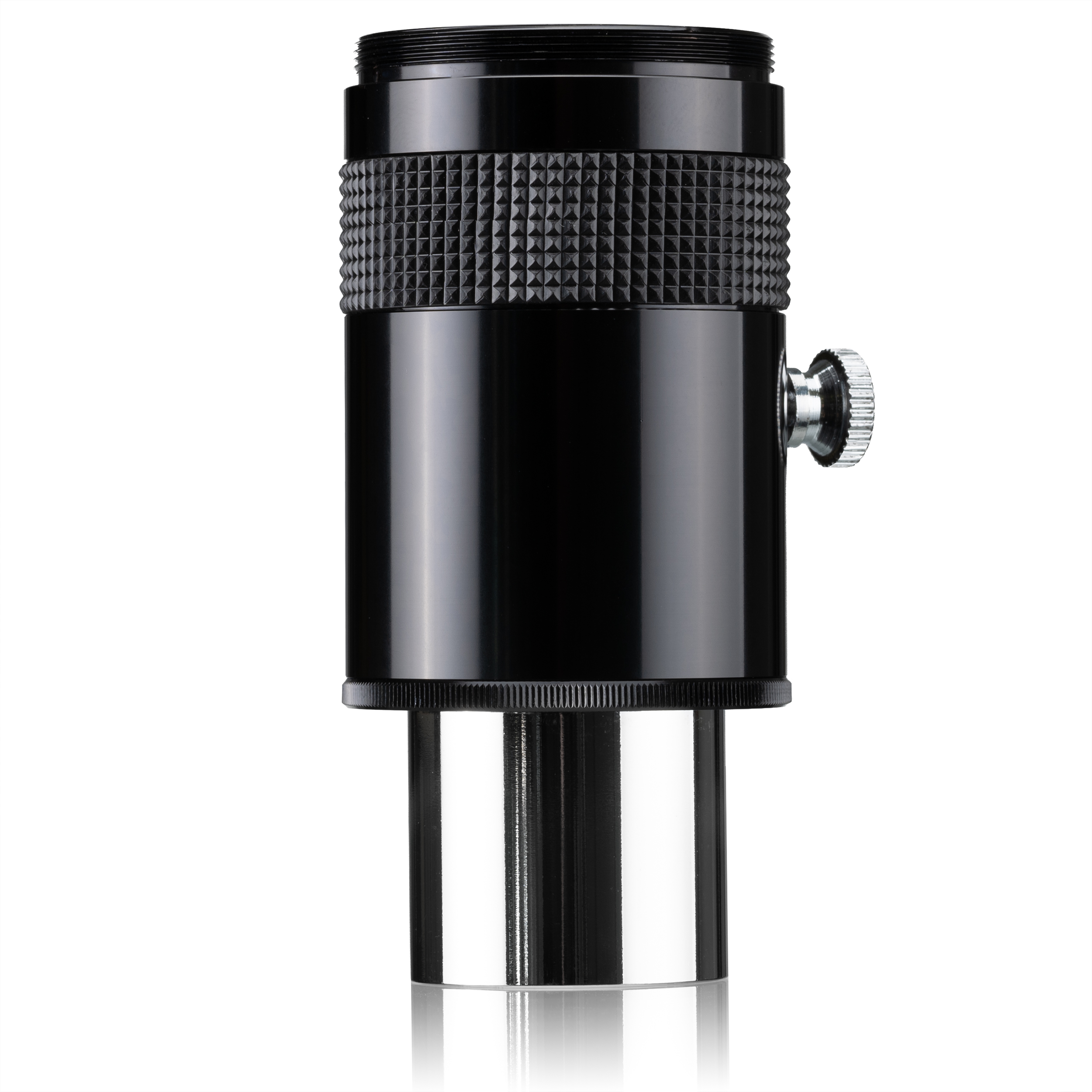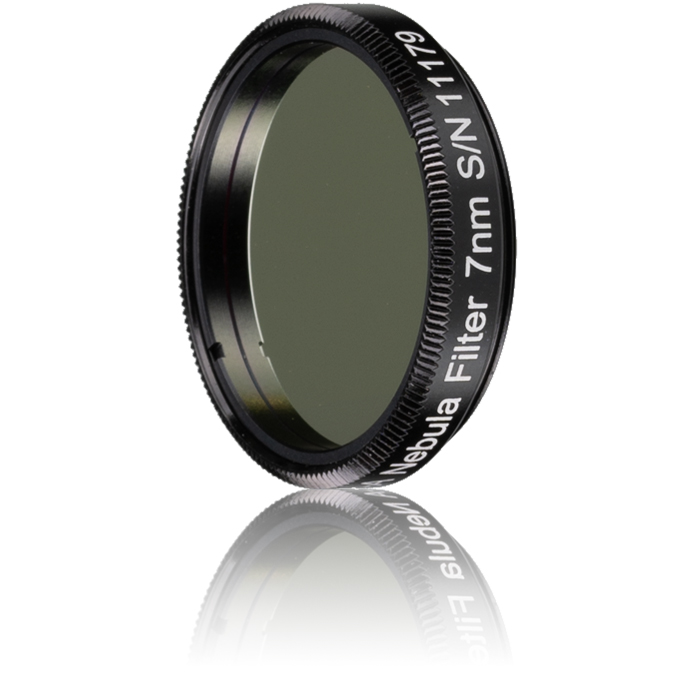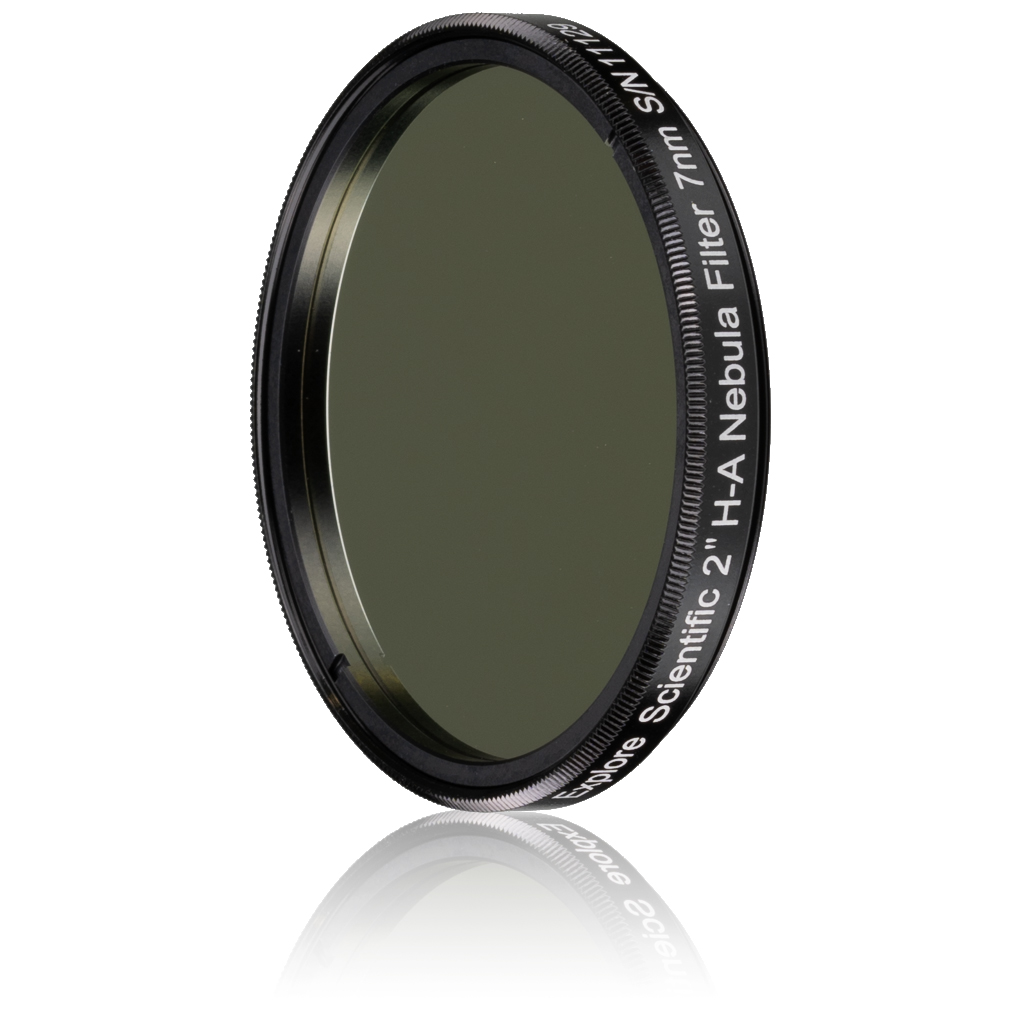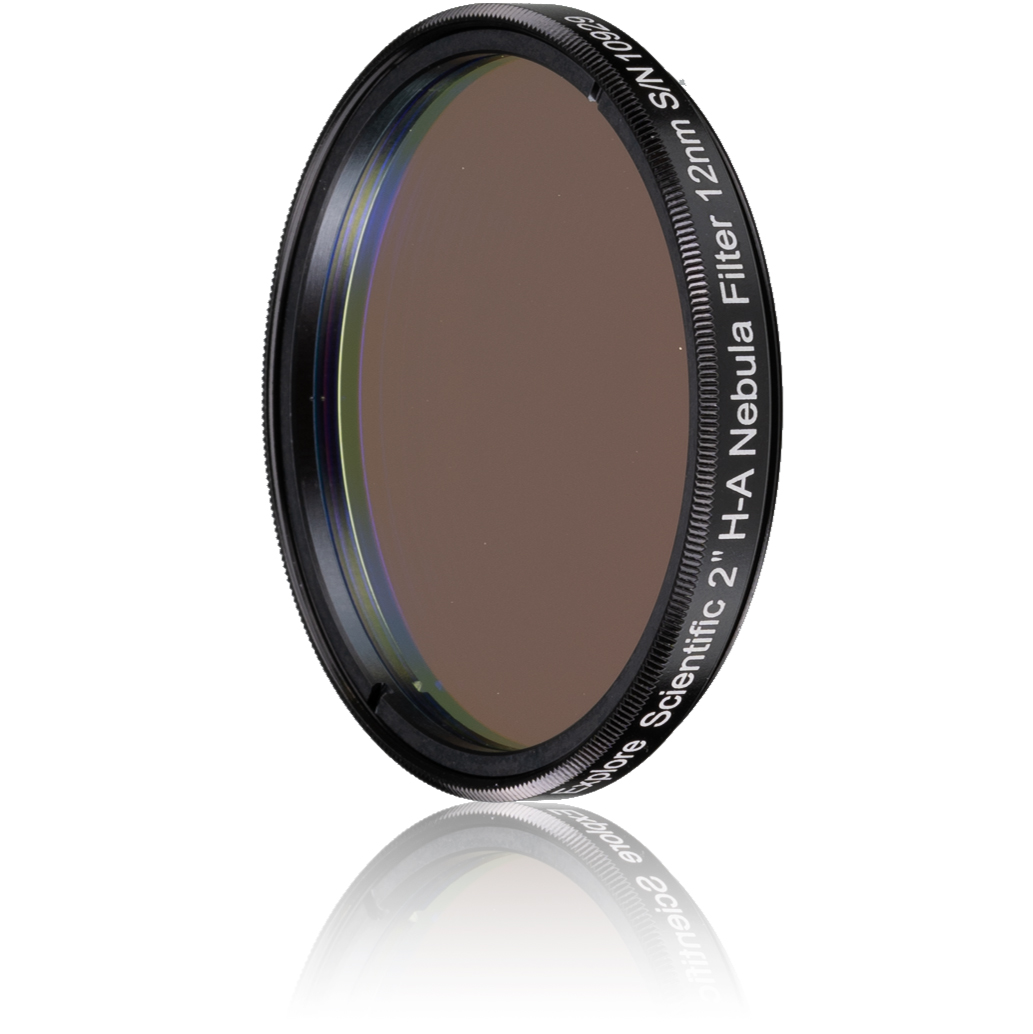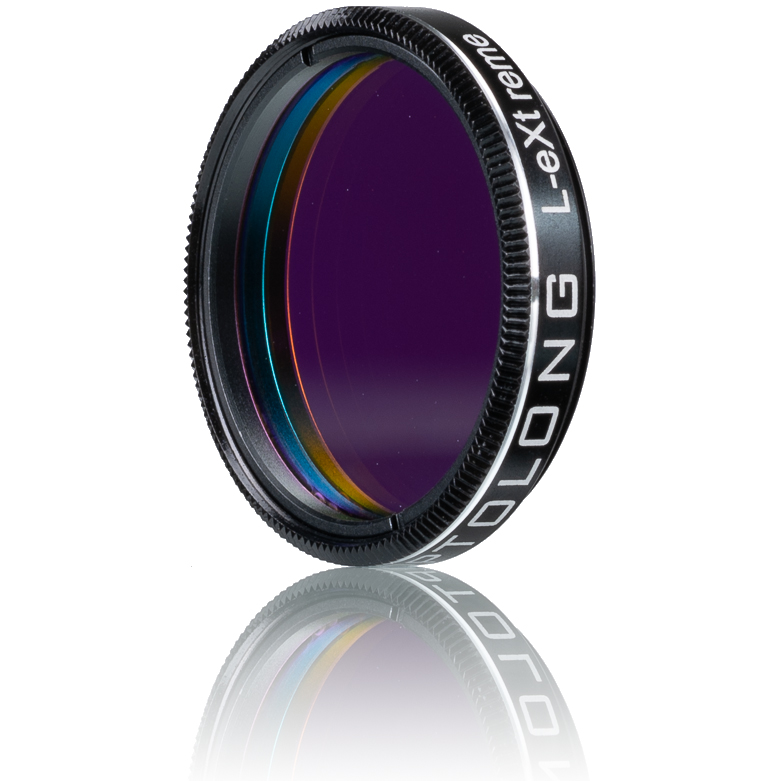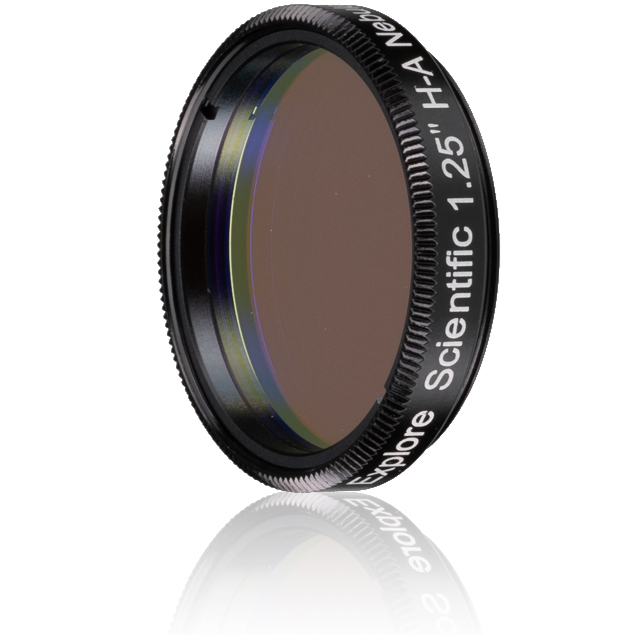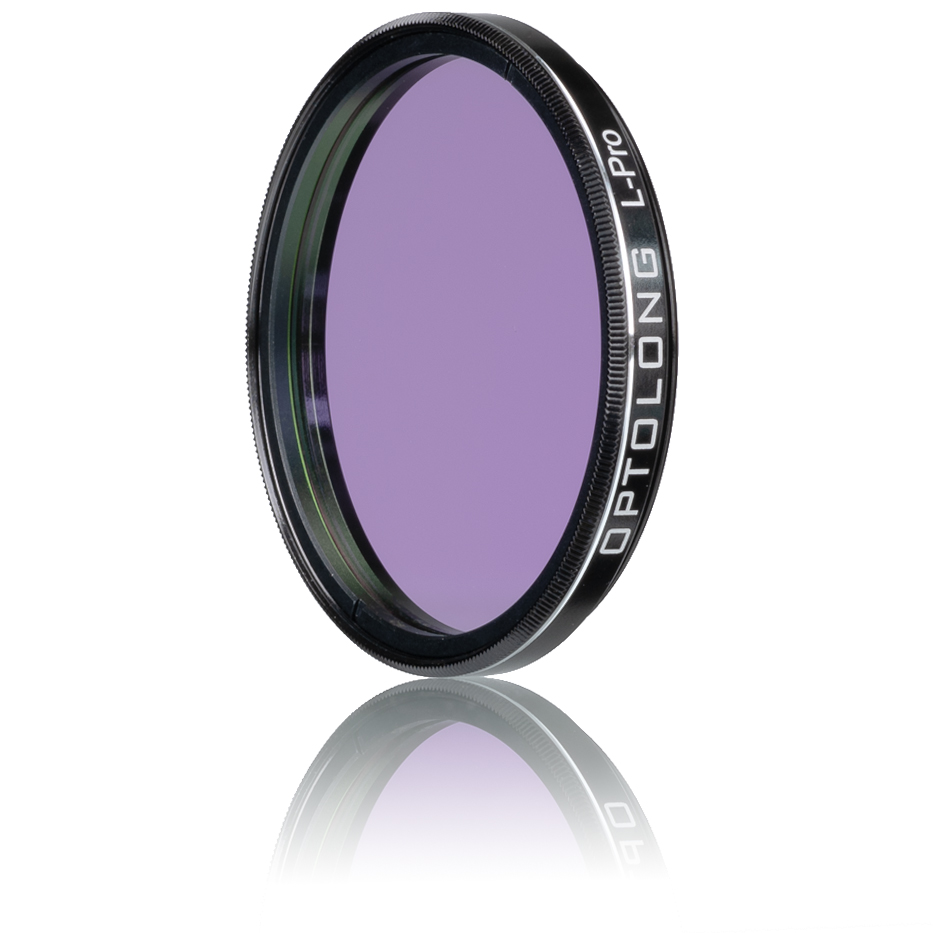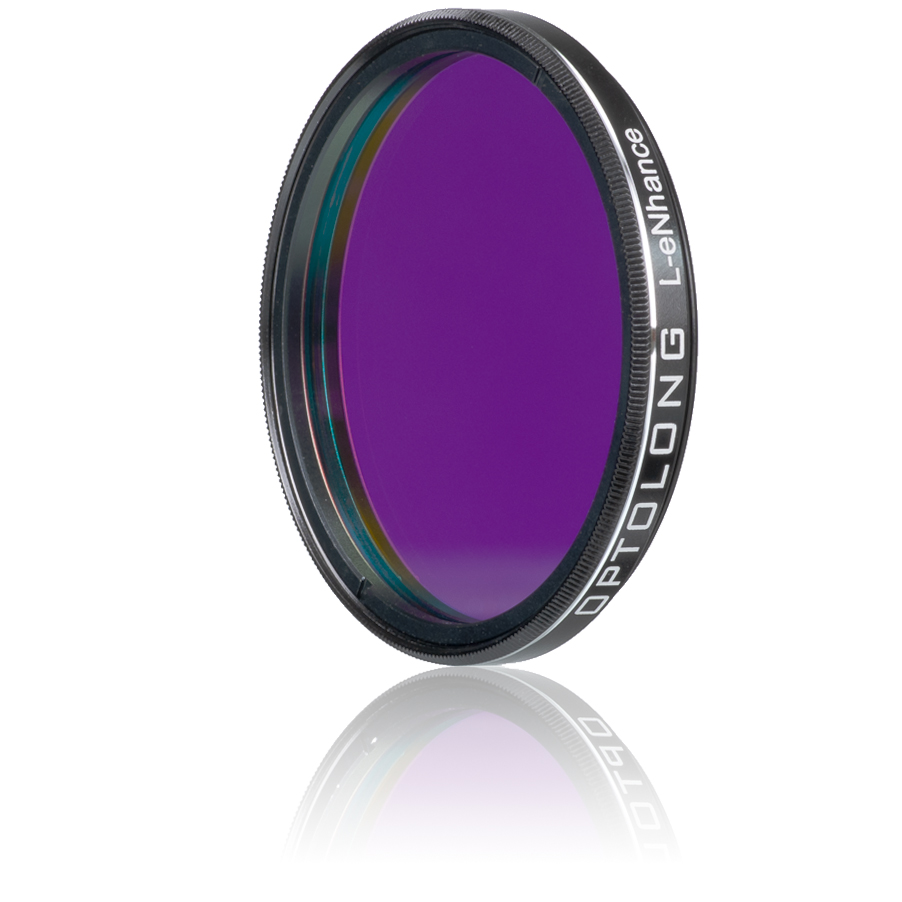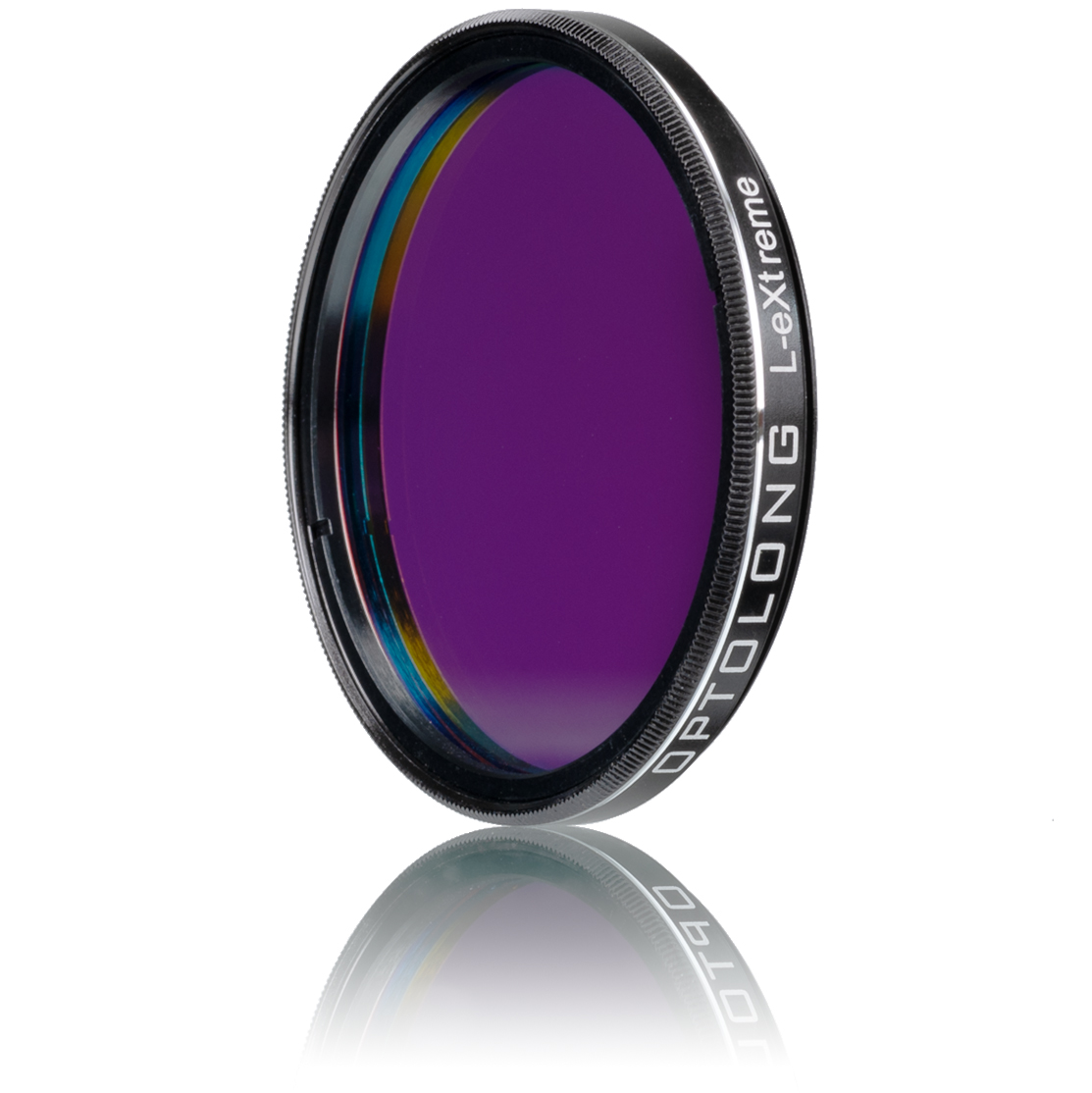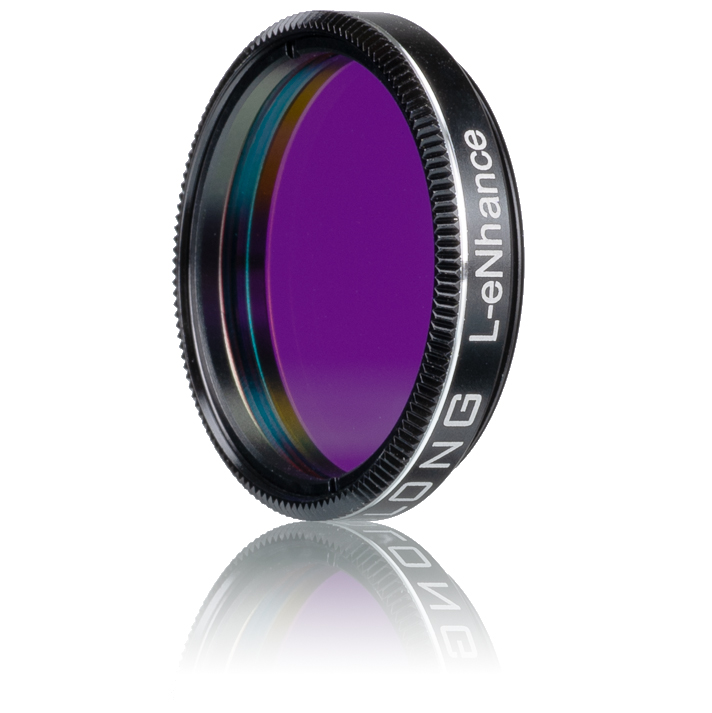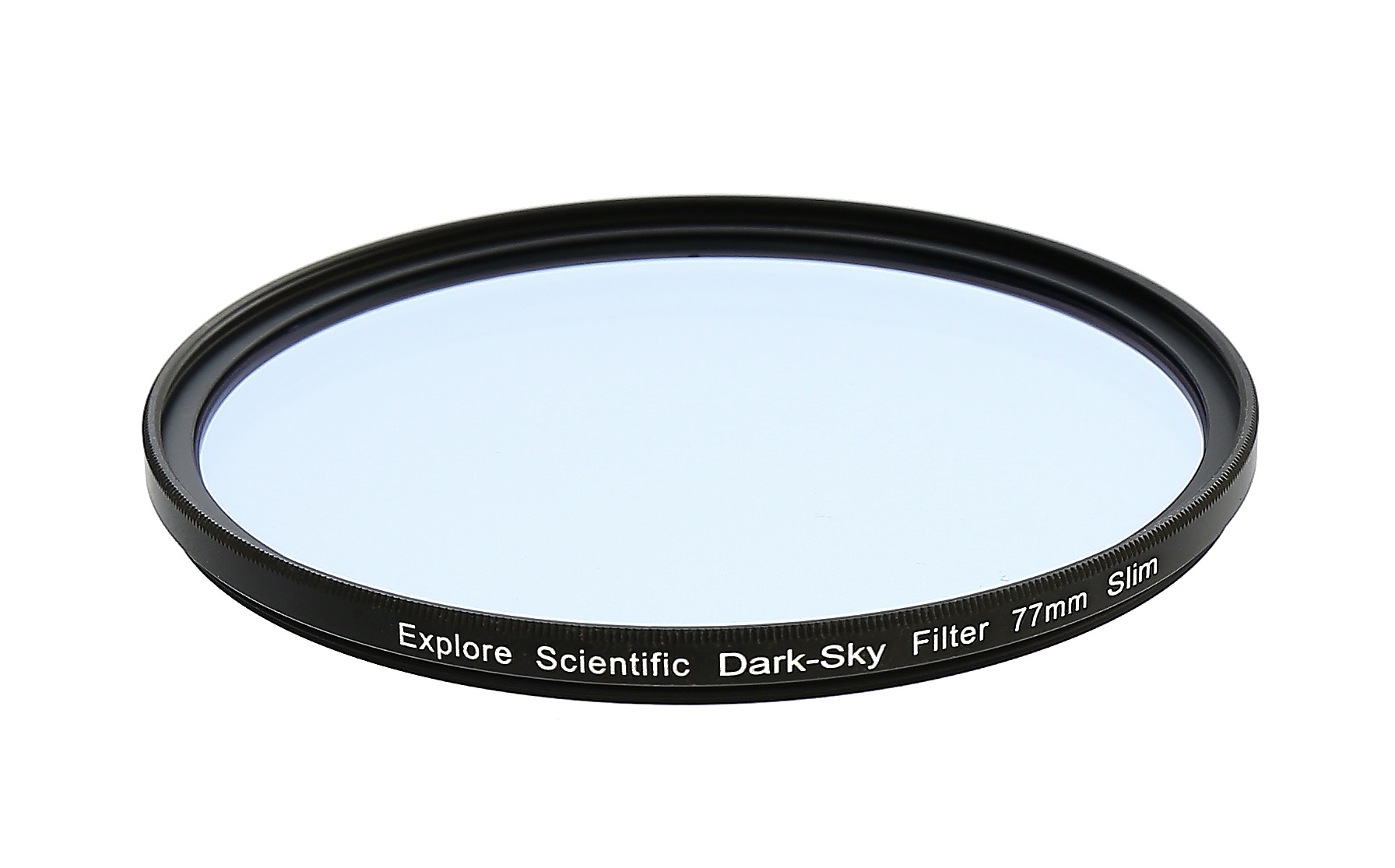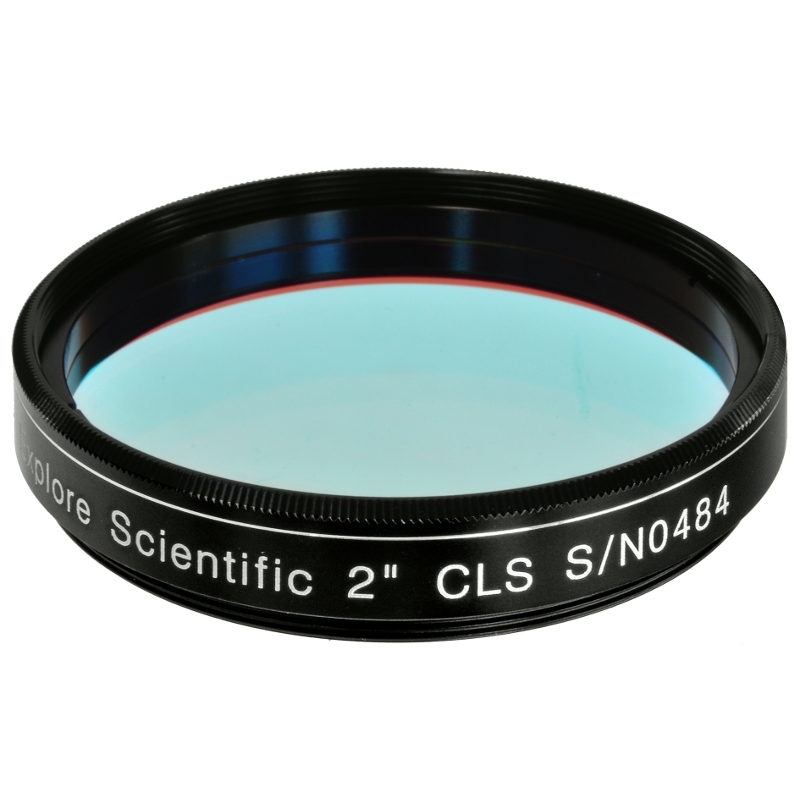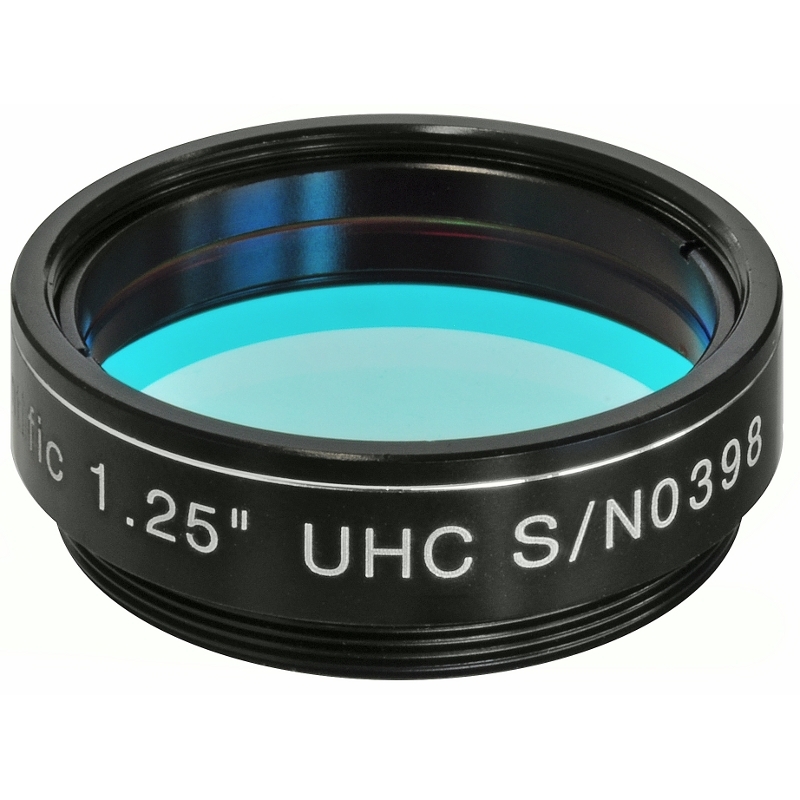Product information "EXPLORE SCIENTIFIC OPTOLONG 1.25" L-Pro Deep-Sky Light Pollution Filter"
LPS filter L-Pro for deep sky nebula constellation photography.The relentless spread or urbanization and its associated light pollution
have become a growing problem for all amateur astro photographers. The
current solutions to the problem can be expensive and might include the
purchase of a monochrome camera, several types of narrowband filters and
a filter wheel. Especially with inexpensive newtonian telescopes,
double-lens ED refractors or even achromats, the L-Pro filters open
up completely new possibilities for the capture of high-class
astronomical images even out of the light polluted city. CMOS cameras
can deliver images like monochrome cameras. This new generation of
filters makes it possible to take amazing astrophotos directly from the
light-polluted city with all its artificial light sources.
L-Pro is a multi-bandpass filter which offers better color balance by
maximizing the transmission band. The balanced transmission allows
astrophotos to be taken with minimal color cast to broadband emission
objects such as galaxies, reflection nebulae and globular star clusters.
L-Pro is the best choice for light pollution suppression.
L-Pro description
L-Pro
(L-Professional) filter is designed to improve the visibility of
various deepsky objects. By selectively reducing the transmission of
wavelengths of light pollutants, specifically those produced by
artificial lightings including mercury vapor lamps, both high & low
pressure sodium vapor lights and the unwanted natural light caused by
neutral oxygen emission in our atmosphere (i.e. skyglow). Together with
the highly transparent in main nebula emission lines at OIII (496nm and
500nm), H-beta (486nm), NII (654nm and 658nm), H-alpha (656nm) as well as
SII (672nm), the filter is suitable for enhancing the contrast and
details for both visual and photograghic purpose at sub-rural areas with
heavy light pollution.
L-Pro is a multi-bandpass filter which offers better color balance by
maximizing the transmission band. The balanced transmission allows
astrophotos to be taken with minimal color cast to broadband emission
objects such as galaxies, reflection nebulae and globular star clusters.
L-Pro is the best choice for light pollution suppression.
Main use and performance
Suitable
for visual observation and astrophotography.
L-Pro filter has a very low transmission reduction rate against
continuous spectrum space objects, and thus is quite effective in
suppressing light pollution sources when shooting galaxies, reflection
nebulae and globular star clusters. The same holds true for visual star
observations.
L-Pro filter alone can suppress infrared wavelength, and thus can be
used at ease for ''L'' image shootings with CCDs.
Light pollution filters do not eliminate the effects of light pollution
or increase the object’s brightness. In many cases, they increase the
contrast between nebula and night sky, not brightening the nebula.
WARNING: These nebula filters are not designed for sun observation. DO NOT LOOK AT THE SUN WITH THIS FILTER. You will go BLIND if you ignore this warning.
Coating technology L-Pro has a multiple anti-reflective coating on the optical substrate. The L-Pro filter uses a precision coating based on ion deposition coating technology. This ensures durability and scratch resistance as well as stability on the CWL (central wavelength), which is not affected by temperature changes. Absolute precision and homogeneity of the coatings as well as maximum values for transmission in the passband and optical density in the off-band range are guaranteed for all filters.
FEATURES
- Professional visual and photographic filter for astronomy
- Improves deep sky nebula constellation photography
- Best choice for broadband light pollution suppression
- Filter diameter: 1.25 inch / 31.7mm
- Connecting thread: M28.5 x 0.6mm (Eyepiece thread 1.25 inch)
- Selected optical glass material
- Spectrum: 380-750nm
- Surface Quality: 60/40 (Refer to MIL-O-13830)
- Fine-optically polished glass to ensure accurate 1/4 wavefront and highest parallelism over the both surfaces
- High transmission at major nebula emission lines (i.e. H-alpha 656nm, OIII 496nm&500nm, SII 672nm and H-beta 486nm)
- Precision
off-band blocking, specifically the major emission lines of artificial
light pollution (i.e. Na 589nm, Hg 435nm and 578nm)
SCOPE OF DELIVERY
- L-Pro filter (1pc)
- Dust protection box (1pc)
